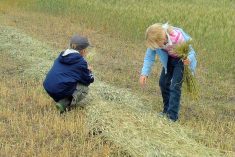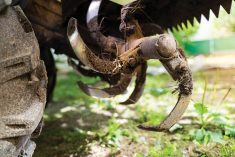A sobering statistic from the Canadian Agricultural Injury data indicates there is an average of four fatalities due to grain entrapment every year in Canada. Grain entrapment incidents happen in grain bins, trucks, wagons, railcars and grain piles. Unfortunately, engulfment happens very quickly, and most victims do not survive.
The best way to prevent grain entrapment is to stay out of grain altogether. Very often entrapments happen when an individual enters a grain bin to free up product that is out of condition.
Read Also

Gentle treatments for pain in the neck
Heading toward year-end, people unknowingly tense up against the cold and busyness, causing neck pain that can often be treated with appropriate support and gentle mobility, athletic therapist Kathlyn Hossack says.
When product is out of condition, it can crust over on the surface or stick to the sidewall of the bin. If the product is crusted over, there can be a void under the surface when product is removed, creating a bridge. When a person walks on this bridged grain, the bridge can collapse, and bury the individual in the surrounding grain. Grain crusted up the sidewall can result in an avalanche, quickly entrapping any individual in its path.
Stored grain can go out of condition because of excessive heat, moisture or a combination of factors.
The best ways to keep grain in good condition (when possible) include the following:
- Dry product before storage.
- Monitor the temperature and moisture content of stored product.
- Know what percentage of moisture is ideal for the product being stored.
- Aerate product as needed to help control temperature and moisture.
In case of out-of-condition grain, and if it is absolutely necessary to enter a loaded grain bin:
- Proactively develop, implement and train any farm workers in grain bin entry procedures as well as emergency procedures.
- Power down and lock out all unloading equipment before entry.
- Wear appropriate personal protective equipment (PPE) for the task.
- Use appropriate fall protection equipment (harness, lifeline, rope grab and anchor point) when entering a grain bin.
- Test and ensure good air quality before and during entry.
- Always have a spotter on the outside of the bin who is trained in emergency response procedures.
Keeping grain in good condition will not only get the best price, but it will also greatly reduce the chances of a grain entrapment-related incident.















